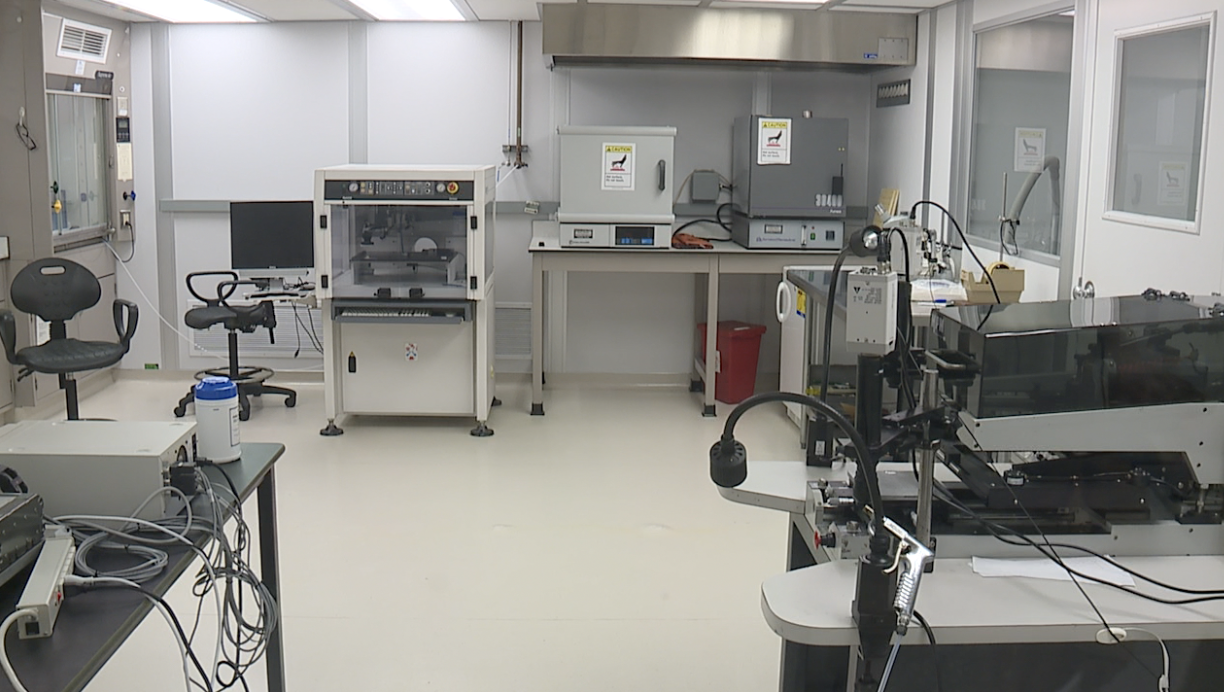CLEVELAND — Beyond the buzzing of the machines, there’s another buzz in the labs at Case Western Reserve University.
“One way you can look at it is Ohio has the opportunity to convert itself or transform itself into a Silicon Valley region,” said Christian Zorman, associate professor of electrical engineering and computer science at CWRU.
Lt. Governor Jon Husted told News 5 that the Intel plant coming to Ohio is the biggest economic development project in the free world.
“We are becoming the Silicon Heartland. And what that means for all of Ohio is that’s going to ripple throughout our state,” Husted said.
Husted estimates there will be 7,000 construction jobs, 10,000 supply chain Jobs and 3,000 high-tech jobs in just the first of four phases of the Intel plant.
Case Western Reserve University is hoping to get a piece of that very large, very lucrative pie.
Intel reps recently toured four facilities and labs at CWRU that deal with semiconductor device manufacturing and microfabrication.

The university is hoping to submit proposals to get the company to invest in their facilities, classes, and opportunities for students, training the workforce that will eventually call Intel’s Columbus campus — and Ohio — home.
“They’re looking for students who have skill sets, but also students who are capable of learning new skill sets,” said science director Ina Martin. “Students that have experience in design, but also work in the future of design.”
Martin said that semiconductor research and microfabrication technology is the kind of work the university has been doing for years.

They enroll about 2,000 students who are prepared to take on technical roles in the semiconductor industry, telling reporter Homa Bash that there is an increasing percentage are women and minorities underrepresented in STEM fields.

To say professors here are excited about Intel’s potential investment is an understatement.
“I’ve been doing this work for over 20 years and I would watch my top students move to the West Coast, East Coast, Southwest, to the Far East to take jobs in microfabrication,” said Dr. Zorman. “And I never thought I’d see the day that students in Ohio, trained in Ohio, might have the opportunity to stay in Ohio.”
This development seems poised to battle the "brain drain" that’s plagued our state for decades while investing in our future.
Below is a statement from Intel regarding their planned investment in higher education in Ohio:
Intel is so excited to build the future of technology in Ohio, and Intel chose Ohio because of its world-class colleges and universities, access to top talent, robust existing infrastructure, and the state’s long history as a manufacturing powerhouse.
Intel supports educational initiatives at universities, four- and two-year colleges, and technical institutes, both in Ohio and nationally, and in March, Intel announced [intel.com] a new commitment of $50M to support Ohio higher education institutions. An additional $50 million across the U.S. will be matched by the U.S. National Science Foundation. Part of this investment will establish the Intel® Semiconductor Education and Research Program for Ohio to fund a collaborative, multi-institution research and education program that will emphasize gaining real-world experience and innovating in semiconductor fabrication.
These investments will provide resources for creating new curriculums for associate and undergraduate degrees, certifications, faculty training, reskill and upskill programs for the existing workforce, laboratory equipment upgrades, and research supporting semiconductor fabrication innovation. These initiatives will also increase access to opportunities and help remove institutional barriers to state-of-the-art STEM education models. This is essential for building a talented, diverse pipeline of future technologists, helping to fill the well-documented technology skills gap.
Intel has engaged directly with many institutions across the state of Ohio – the RFP is open to all higher education institutions in Ohio. We have requested proposals by the end of May and expect to share more in August about the organizations who will be receiving funding.








